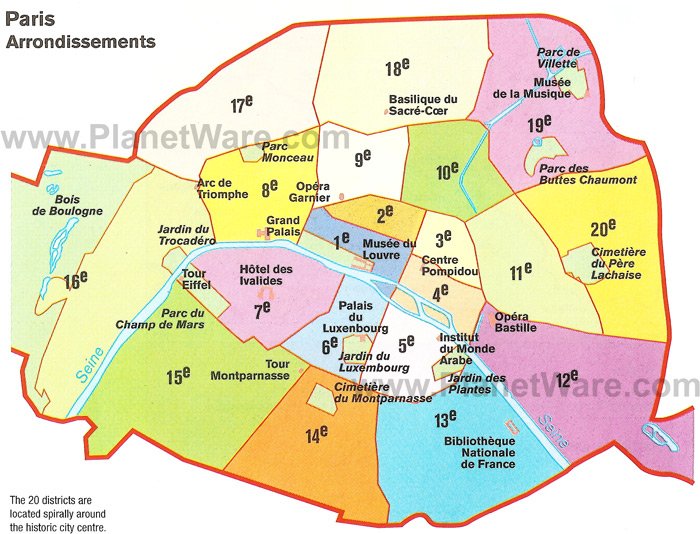Cara Black, author of so many delightful Aimee LeDuc novels that take place in Paris, provides an introduction to her delightful main character. Below, Cara reveals Aimee’s unconventional family background, her inventive sense of style, and above all, her compulsion to solve murders in the world’s most beautiful and increasingly complex city. Come to our event and meet Cara and Jacqueline Winspear on April 11.
The soft apricot light hits the zinc rooftops at sunset, butter smells emanate from the bakery, the Seine gurgles below, and green leaves rustle on the cobblestones. Yes, it’s Paris and springtime. Bonjour and welcome to Aimée Leduc’s Paris: the off-the-beaten- track Paris, the Paris you’re not going to find in the guidebooks, the darker side of the City of Light. Aimée works as a private investigator, scouring the alleys of Paris, from the cafés and shops to the rooftops, catacombs, and, when clues take her there, the dank sewers under the city. These occasionally unpleasant adventures are just the price for solving some of Paris’s highest-profile murder cases.
Aimée’s agency is located on the rue du Louvre, within view of the famous museum. The agency was created by her grandfather—formerly a Suréte
detective—and passed down to Aimée’s father, a flic, or cop. Aimée inherited the agency after witnessing her father’s tragic death in an explosion while he was on surveillance for a criminal investigation. With the help of her friend René Friant, a fellow Sorbonne student and a hacking wizard, Aimée took over the agency and turned its focus toward computer security, vowing never to take on any criminal cases like the one that had killed her father. Some promises, however, are easier made than kept. Together, Aimée and René are a formidable team. René, a dwarf, is a natty dresser, drives a classic Citroën DS, and has feelings for Aimée that are, alas, unrequited. Aimée considers René to be her best friend; she would—and on numerous occasions has—put her life on the line for him. Aimée, half-American, half-French, is tall, svelte, and stylish. She has a sharp eye for spotting vintage couture at flea markets, runs in heels over the cobbles, and ties her scarf perfectly—a genetic trait of a true Frenchwoman. She never leaves her apartment without mascara and a spritz of Chanel No. 5. It’s Louboutin heels all the way, unless she’s wearing her high-tops for surveillance. In her worn Vuitton bag she carries a lockpick set, encryption manual, ChanelRed lipstick, and other tools of her trade.
Aimée zips around Paris on her moped, but when she takes a cab, she makes sure to over-tip the driver for rainy-night taxi karma. But she’s not perfect, by any means: Bad boys are her weakness, and she doesn’t cook. Why should she? That’s why bistros were created! Home is an inherited seventeenth-century townhouse on the Ile Saint-Louis—a scenic island in the middle of the Seine—where she lives with her bichon frisé, Miles Davis (that’s pronounced Meels Daveez). The townhouse is equipped with antiquated plumbing, a nonexistent heating system, and auction-house antiques. She still misses her late father and secretly longs to find her American mother, who abandoned her when she was eight years old.
Fierce in her pursuit of justice for the wronged and the forgotten in society, Aimée follows her investigations throughout the many arrondissements of Paris: the historic Jewish district of the Marais, the working-class boulevards of Belleville, the wholesale garment district of the Sentier, the passages and ateliers of the Bastille, the village streets in Clichy, the steep staircases of Montmartre, the arched bridges off the rue de Paradis, her own Ile Saint-Louis, the Left Bank and medieval student area of the Latin Quarter, the aristocratic environs of the Palais Royal, and the Basque enclave of Passy, where Balzac lived, wrote, and hid from his creditors.
Aimée’s world is inhabited by the faces of contemporary Paris: Jewish survivors of the German occupation, Arab, Haitian, and African immigrants, the elite from Grands Ecoles, aristocrats, Corsican gangs, the haute bourgeoisie, Ministry officials, colonials from Indochina, and Kurdish militants. The walls of the city were built in the sixteenth century, the courtyards hidden, but secrets from the past resonate in Aimée’s Paris—a living, breathing, vibrant city.
One reader told me at a reading in Paris, “I love Aimée because she never lets up and she never dresses down.”
But right now Aimée’s checking her Tintin watch. It’s time to take Miles Davis for a walk quayside on the Seine before riding her moped to Leduc Detective. Won’t you
join her? Bon voyage!
Cara


